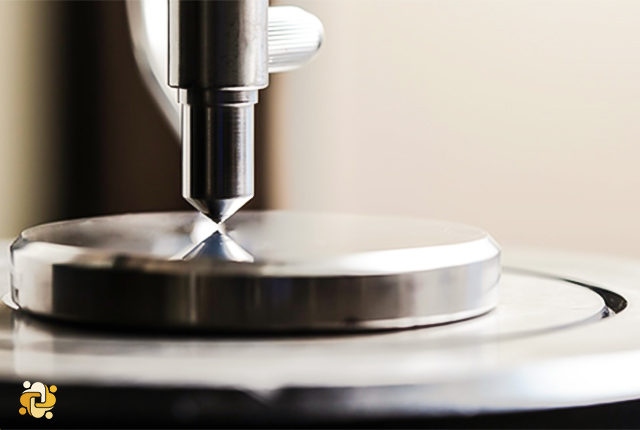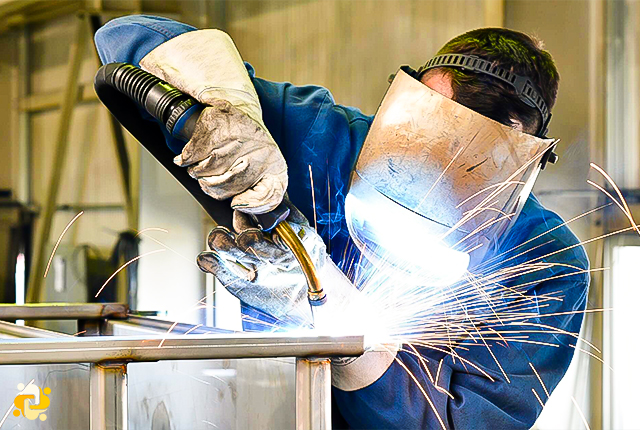
Destructive tests used in the weld verification process
2022-11-27 20:40
Introduction
Testing is one of the most basic components of any engineering activity. In many stages of the complex process of producing an engineering material, various tests must be performed to evaluate and validate the manufacturing of that material. These tests, in addition to the time of construction, will also be necessary for the time it is in service in most cases, and as a result, the possible changes made in the engineering material, such as fatigue and corrosions, will be determined.
Based on this, the types of tests used can be divided into the following two general categories:
- Tests to determine the properties of materials or parts
- Tests to determine the soundness of materials or parts
The first category tests are generally destructive. In order to determine the properties of the desired material or parts, a standard sample is prepared and a test is performed on it. Obviously, in the destructive test, the sample will be damaged or destroyed. For example, the tensile test is one of the types of destructive tests where the sample is stretched to the point of failure and the results are checked and documented.
Second category tests are generally non-destructive in nature and are used to check the presence of defects during service of materials or parts without damaging or destroying them. In these tests, sampling is not necessary, and the checks are done on the original pieces.
In destructive tests, properties such as tensile strength, compressive strength, shear strength at ambient temperature and other temperatures, stiffness, hardness, impact strength, time function properties such as fatigue and creep phenomena, resistance to oxidation and corrosion are evaluated.
In many standards related to the preparation of welding documents, the destructive tests discussed in this article can be used to verify a WPS. This article provides a brief description of the types of destructive tests used in the WPS & it’s supporting PQR.
Tensile test of welded joints
To determine the tensile strength of the weld metal or the welded joint, the samples can be prepared based on the standards used. The most important tensile tests for evaluating the welded part include the following:
- Testing of all weld metal
- Transverse butt weld test
- Longitudinal butt weld test
All weld metal test, a rod is prepared in the welding metal according to the desired standard. This sample will be sent to the laboratory for tensile testing. Generally, the only complication of this method is the possible mixing of the weld metal with the melted base metal.
The transverse butt weld test includes a sample where the weld line is positioned vertically relative to the tensile test clamps.
Longitudinal butt welding test is in such a way that the direction of the welding line of the sample is parallel to the direction of tensile force.
Bending tests
Bending tests are used to evaluate the welding quality in terms of the ductility of the weld metal and HAZ, as well as tests to detect welding defects, such as incomplete melting of the side wall, insufficient melting of the root, and incomplete penetration of the weld joint. These tests are divided into three groups:
- Free bending test
- Guided bending test
- Controlled bending test
Bending test samples can be prepared perpendicularly or parallel to the welding axis. Bending test results are expressed in different ways:
- The percentage of elongation in the external fibers of the sample
- Minimum bending radius before destruction
- Bending angle before destruction
Bending test is effective and useful in detecting brittleness, revealing cracks or defects including insufficient fusion, large slag impurities and crack in HAZ. However, generally, micro cracks are not detected in this test.
Toughness test
Usually, toughness refers to the properties of objects against the penetration of another object to their surface and their resistance and impermeability. The most common toughness test is to move an indenting object into the sample and record the force required to do so or measure the amount of indentation against it.
The most common type of this test is its static type. In such a way that a hole is created in the sample under a certain pressure and its dimensions are measured. Although this type of test is not designed to evaluate wear resistance, generally materials that are measured with higher toughness in this test will also have higher wear resistance.
Another type of this test is dynamic type in such a way that a weight or pendulum is released freely and hits the surface of the sample. This type of test is suitable for samples with higher toughness because materials with this characteristic will have very little surface plastic deformation and the measurement of the return distance of the weight after impact can be used in relation to determine its surface toughness.
Many metal alloys do not have a homogeneous structure, and performing a single test cannot express the general properties of the sample. For this reason, the measurement should be done several times. Typically, three static tests are used more than others:
- Vickers diamond test
- Brinell test
- Rockwell test
Impact testing and brittle failure
In World War II, much attention was paid to the brittle failure of T-2 tankers and welded Liberty ships. Some of these ships were completely divided into two parts. Most of these failures occurred in cold winter weather just as the ships were still at anchor. Investigations showed that steel, which is usually soft, becomes brittle under special conditions. Different types of impact tests are used to determine the tendency of a material to exhibit brittle behavior. This type of test identifies differences between materials that are not visible in tensile testing. Today, all impact tests of welds are performed using samples and Charpy type machines.
The advantage of this type of test is that low temperature tests are possible only by cooling the sample. In different standards, different types of samples used in this test have been determined.
Fatigue tests
A part or structure may be affected by periodic stresses during operation. It is rare that a component is subjected to only one type of loading cycle in its entire working life. Various devices have been designed to perform the fatigue test, but there is no standard for the test sample. Fatigue test results are usually displayed as S-logN curves.
Fatigue is one of the most common types of failure during service, which accounts for 90% of the failures of welded parts. Fatigue tests are designed to measure the effect of intermittent stress loading on a welded joint. For this purpose, test rods are designed and sometimes completed structures or machine parts and fully welded sections are tested.


